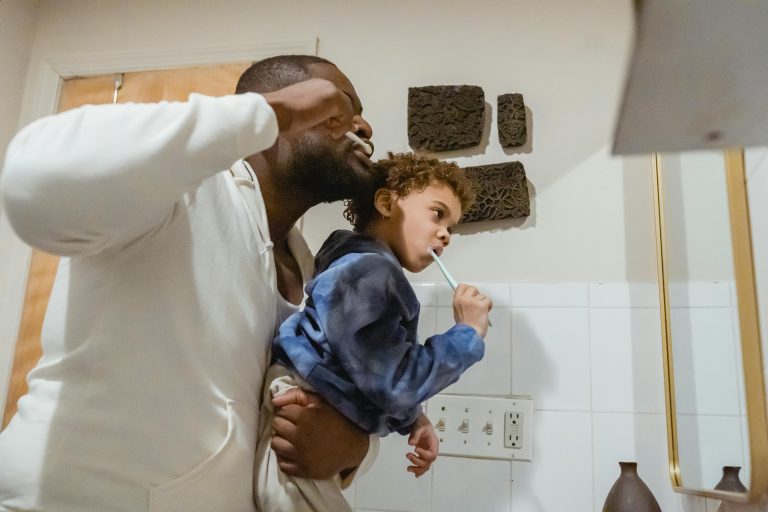A Guide to Buying Child-Friendly Beds Your Kids Can Grow Into

There’s no question that bedtime is a critical aspect of a child’s development. According to experts, establishing a solid bedtime routine is necessary for a child’s physical, cognitive, and emotional wellness. On the flip side, the CDC reports that poor sleep hygiene can heighten the risk of kids suffering from Type 2 diabetes, obesity, and attention problems.
Currently, 6 in 10 middle schoolers and 7 in 10 high schoolers don’t get enough sleep. To prevent these, it’s important to create a bedroom that’s conducive to sleep. Inarguably, the most important aspect of such a bedroom is the bed itself.
However, since kids can grow very quickly and their lifestyles often change, it pays to think ahead and choose a bed they can grow into. With that in mind, here is a quick guide to choosing a child-friendly, future-proof bed your kid (and your family!) will love.
Size

As seen on Wayfair, these are not only roomy enough for sleep but can also double as storage since some come with built-ins. For instance, the Wade Logan Burlyn Queen bed has drawers built into the bed frame, so kids can keep their essentials nearby without cluttering their room.
Now, if you occasionally co-sleep with your kids or your kids will share a bed, look for ones that can accommodate multiple people. California King bed sets, in particular, are ideal because they come with add-ons.
The Voyage Natural set from Nate + Jeremiah comes with a matching dresser and nightstand that you and your little ones can use. As for the bed itself, Cali Kings are notably long, so everyone has enough space to have a good night’s rest.
If you’re wary of the higher costs associated with larger-sized beds, note going bigger means you won’t have to keep replacing smaller beds at regular intervals, so you get more bang for your buck in the long run.
Materials
 Whether a parent would like to admit it or not, kids can get rowdy. For many, this can result in some rough-housing on the bed. While most kids are small enough not to cause significant damage, repeated stress on a bed can drastically shorten its lifespan.
Whether a parent would like to admit it or not, kids can get rowdy. For many, this can result in some rough-housing on the bed. While most kids are small enough not to cause significant damage, repeated stress on a bed can drastically shorten its lifespan.
That said, it’s better to invest in frames made of durable materials that will be comfortable and safe as your child gets older. To illustrate, rather than getting a bed made of MDF, which is prone to sagging, go for something stronger like metal.
This material is still cost-effective, especially if you buy the frames from stores like Target, but they’re designed to withstand much more weight, impact, and damage. For shared beds, this is a critical factor for optimal safety and comfort.
Of course, you also want to consider materials regarding how they’ll visually hold up over time. With this in mind, opt for more forgiving materials like metal or wood. Apart from being resilient to damage, they’re less likely to show premature signs of weathering.
If these materials should need some upkeep, it’s usually just minimal. For instance, the TARVA untreated bedframe, which is part of the Scandinavian-style raw wood furnishings from IKEA, can last for years and can even be turned into a DIY project for your child to personalize as they grow older and their decor preferences change.
Design
 When shopping for home decor, both kids and parents alike can get carried away and make purchases that are cute but dated. Although there’s nothing wrong with choosing a fun theme, it’s important to think about how long that theme will be interesting for your child.
When shopping for home decor, both kids and parents alike can get carried away and make purchases that are cute but dated. Although there’s nothing wrong with choosing a fun theme, it’s important to think about how long that theme will be interesting for your child.
So, while a Lightning McQueen-inspired bedframe from Walmart may be exciting for a younger child, it’s unlikely they’ll still be as invested in this when they hit puberty. Additionally, it’s important to understand how a bed’s design may impact a child’s sleep routine. For some kids, overly busy or bright beds can lead to overstimulation.
This means that in order to create a calming and timeless bedroom, you should go for softer, more neutral tones. These will help create a soothing ambiance that your kids can work off of as they get older.
Of course, this doesn’t mean the bed has to be bland. Instead, you can add pops of color and personality through small decorations. For younger kids, letting them add their favorite stuffed toys is a great way to personalize a bed without much commitment. Aside from this, Stephanie Paine’s article on sleep regression notes that sleeping with stuffed animals can help little children feel safer and fall back to sleep faster.






